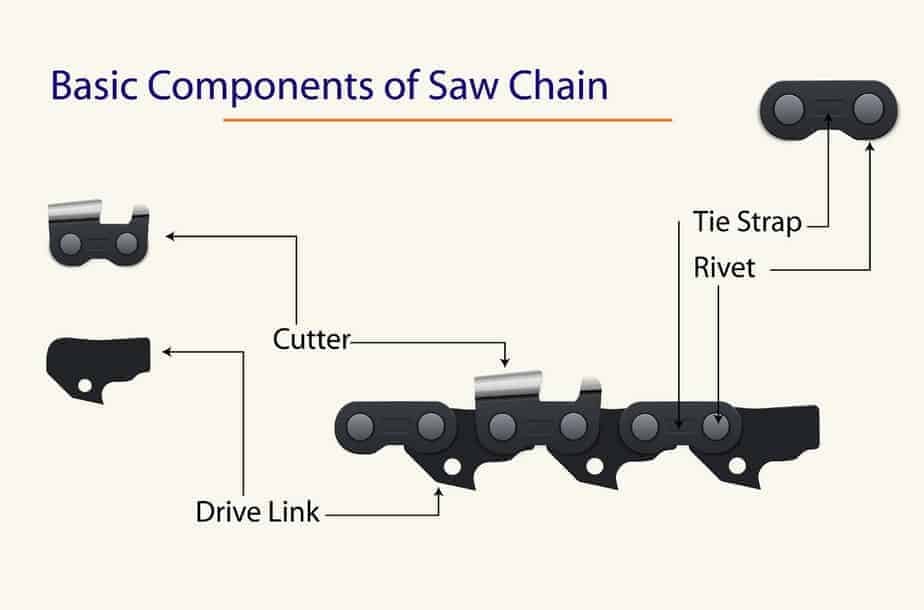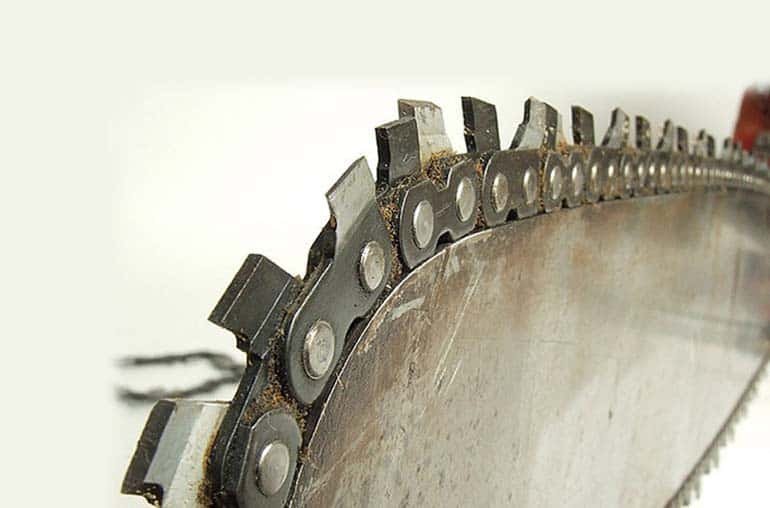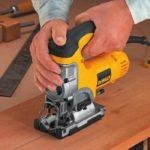Usually, a saw chain (aka cutting chain) stands on the guide bar as well as comes in different sizes. Whatever you have a chainsaw, or you are about to buy one, it will be an ideal decision to know in detail, whereas a saw chain is one of the core parts of a chainsaw!
So, when you’ll see lots of saw chain types in the marketplace, we won’t be surprised if you get your mind confused. With all those types around you, the basic types are four by the way. Need some education on it? Well, we’re discussing on the four basic components of saw chain/ chainsaw chain.
What is The Five Basic Components of Saw Chain?
Indeed, the way of cutting style highly depends on the saw chain (chainsaw chain). For instance, it is necessary to give your hands on this write-up, whereas we are going to make a discussion about the saw chain/chainsaw chain.
If you are a newbie, then you really need to understand about the saw chain/chainsaw chain. Or else, you may have to end up with junks! Feeling worried?
Well, set your worries aside, as we're here to let you know each and every detail info about the saw chain/chain saw chain. As a result, you don't need to spend a heap of the penny as well as your valuable time. Just make sure to stay with us till the end to know about the five basic components of saw chain.
Here are the five basic Components of saw chain:
- Chain Cutter/ Teeth
- Chain arrangements
- Gauge/ thickness of the drive links
- Chain structure

Basic Components of Saw Chain
Chain Cutter/ Tooth Design
It is one of the most important parts of the saw chain that brings to pass the job of cutting. The two parts of the cutters (left-hand and right-hand) are known as the meat and bones of the chain. Further on, it influences the speed, shape as well as the aggressiveness of a cut. The cutter is based on 4 different types:
- Full-Chisel Cutters
- Semi-Chisel Cutters
- Low Profile Cutter
- Micro-Chisel Chains
What is a Full Chisel Chainsaw Chain?
In addition to measuring a chain, another thing you should consider is the type of chain. The complete chisel chain one of the most popular types of chainsaws on the market. The manufacturer builds it in a full chisel chain to provide impressive, fast cutting performance.
Full-Chisel Cutters, It features only a couple of teeth, but the bar is larger enough (approximately 24-inch). This is much better for cutting hardwood trees! It can provide faster cuts throughout the wood (any type). However, it is a bit dull when you are going to use it on softwoods!
Usually, they have round grind profiles and square radius edges. While they offer such a higher speed, so there is a bigger risk of kickback! We recommend you not to pick out it for dirtier types of wood.
Warning: Don't ruin it by using in rough conditions!
What is a Semi-chisel Chainsaw Chain?
Semi-Chisel Cutters, It is a mid-grade chain arrangement that suits mostly with the softwoods. Even though they cut a bit slower, they often stay edgy for a longer time. For instance, the cutting will be smooth and accurate at the same time!
Semi-chisel cutters has a typical round grid edge as well as a round radius edge. This is rather tough and able to cut a long time without any blunt. Unlike the previous one, it is ideal for softwoods (as we’ve mentioned before), frozen woods, and even for dirtier woods.
What is a Low profile cutter chain?
Low Profile Cutter, One of the popular and handy options that fit almost every consumer saw chains. It refers to grind profiles and round radius edge. They are easy to file as well. This is mainly for those who don't have much experience. Sooth to say, this is one of the best beginner-friendly chains out there!
Note: It requires frequent sharp and a bit insensitive against debris.
What is micro-chisel cutter chain?
Micro-Chisel Chains, It is quite simple to sharpen and provide a smooth cut. A bit similar to the Semi-Chisel Cutters, but got some bad fits though. The corners are smaller and rounded. Without any hassle, The micro-chisel chains works against dirt conditions.
Gauge/ thickness of the drive links
The thickness of the drive links is called gauge. It’s the vital part of a chain that sits inside the bar. It is not the prominent cutting teeth. The manufacturer often mentions the measuring of a gauge on the bar. It’s mention in inches or millimeters and can be one of 4 sizes.
- 063″ or 1.6mm
- 058″ or 1.5mm
- 050″ or 1.3mm
- 043″ or 1.1mm
The most common size is 058 ″ or 1.5 mm, and it may be marked on the chain packet and is usually looked stamped above the chainsaw guide bar. If you do not find this number in the bar, it is better to look in your manual instead of setting the measurement yourself.
The thickness of the gauge must match inside the bar groove. If the chain gauge too wide and the chain does not qualify the bar. A very narrow chain gauge and twelve chains will be opals imperfect.
Chain arrangements/ The sequences
- Full Complement Chain
- Skip Chain
- Semi-Skip Chain
Chain structure
- Guide
- Drive link
- Tie strap
- Rivet
What is Guide?
It is kind of the small sloped metal piece, which stands immediately in front of the cutter (The core component of a saw chain). These both (cutter and guide) are the parts of the same chain link. The guide can't even play a role in terms of cutting, however, it is one of the main parts that impact the chain safety and the speed at the same time!
Fixing the depth of the cut is the prime function of the guide. It determines the aggressiveness of cut in other words.
The name describes itself, whereas it is the component that is designed for guiding the cutter into the piece of wood. As you can see, a cutter seems to be an orphan without the assistance of the guide!
What is Rivets?
Rivets are mainly used as fasteners that connect two pieces of metals or other kinds of material. They look somewhat of a screw, but their shafts and heads are quite smooth. It creates a tighter connection rather than a screw. Also, their shaft is much better at resisting side-to-side movement.
Rivets put in a tighter fit as they don't leave any kind of space between their shaft and the metal.
What is Drive Link?
It shapes like a shark-tooth that stands out in the middle of the chainsaw chain. The rivets, as well as tie straps (we are going to cover it next) corroborate to each side of the chain's drive link.
If it is still unclear, then think of a sandwich. The loaves of bread are the tie straps and the cheese/meat (which is in the middle) is the drive link.
The drive link plays a significant role, as we've mentioned before. It retains the chain aligned and attached to the chainsaw bar. A chain is unable to stand on the chainsaw if the drive link doesn't work properly. As a result, the whole work seems to be meaningless.
A drive link doesn't need to sharpen like the cutter. However, you need to clean out the bar grove (bar track) after many uses.
What is Tie Strap?
The tie strap is a small yet effective part of a chainsaw chain. It is a simple metal plate that connects the link. Running back to our sandwich metaphor, if you imagine the chain as a sandwich, then the tie strap would be the bread. They transform a lot of drive links into the chain. That's how it works!
Note: Most of the tie straps are known as connectors, whereas others have the cutters on top.
Final Words
We hope this write-up has answered all the chain-related questions that you had. It was brief yet effective for you. This article about the five basic components of Saw Chain/Chainsaw Chain is also going to help those peoples who are firewood enthusiasts.
A big thanks for being with us. Ready to go for doing something awesome?
Well, you can just get your hands on the best chain saw and the correct saw chain. In this way, you’ll be able to nail the whole DYI project.
Thank you being with us







